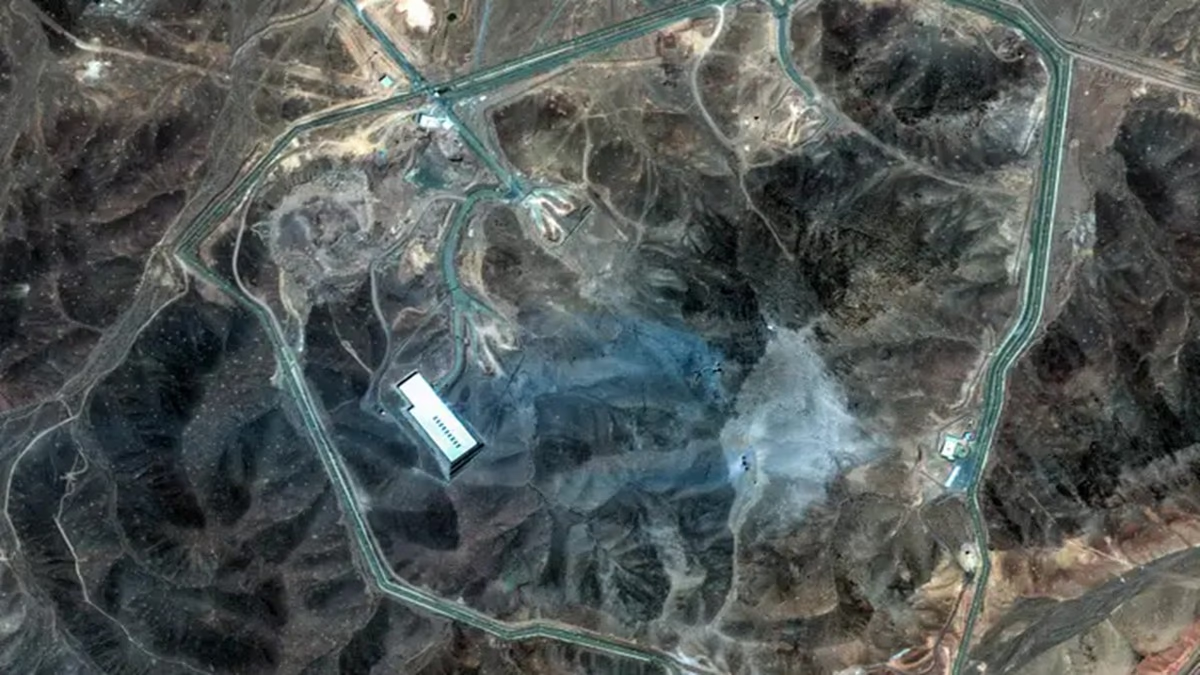U.S. President Donald Trump made a bold move by authorizing strikes on Iran’s uranium enrichment sites in Natanz, Fordow, and Isfahan. Trump stated that a full payload of bombs was unloaded on Fordow. Six U.S. B-2/A Spirit stealth bombers carried out the bombing on the Fordow nuclear site, releasing a total of 12 GBU-57 Massive Ordnance Penetrators (MOP) on this subterranean facility. These GBU-57 bombs, often referred to as bunker busters, are impactful.
Every B-2 bomber is equipped with two Massive Ordnance Penetrators, which are the only munitions capable of penetrating the Fordow uranium enrichment site located approximately 90 meters underground. Each MOP weighs 14 tons with over 2 tons of explosives. Additionally, the U.S. launched 30 Tomahawk Land Attack Cruise Missiles (TLACMs) from submarines in the Arabian Sea targeting Iran's Isfahan and Natanz nuclear sites. The Tomahawk missiles have a range of 1500 kilometers and can carry explosives up to 450 kilograms. As Natanz and Isfahan aren’t deeply buried, they were targeted using conventional weaponry.
Iran’s Nuclear Program Shocked
To target Iranian sites, B-2 aircraft undertook a lengthy journey. They flew over 40 hours nonstop from the United States, with air-to-air refueling. It’s uncertain if this mission involved the B-2 bombers tracked by commercial flight over the Pacific, or other planes flying through the Atlantic in the dark. This represents America's most extensive air strike since the Massive Ordnance Air Blast (MOAB or Mother of All Bombs) against ISIS in Afghanistan in 2017.
The extent of damage to Iran's nuclear sites from these strikes is unclear. It's premature to evaluate the impact of these attacks, but deploying hefty explosives on nuclear facilities signifies a setback in Iran's nuclear enrichment program—possibly delaying it for years. Iran might consider using Highly Enriched Uranium (HEU) for a Radiologically Dispersed Device or 'dirty bomb.' The capacity for producing the enriched uranium necessary for nuclear weapons is now disrupted, closing off this avenue.
Read More: Israel’s strategic offense in Iran intended to render Khamenei powerless. What lies ahead for Tehran?
U.S. Support Strengthens Israel
In this ongoing conflict, Israel emerges as a key beneficiary. Following the massacre of Israeli civilians by Hamas on October 7, 2023, Israel launched an offensive targeting Hamas, Hezbollah, and Houthi—a trio of Iran-aligned militia organizations. The International Atomic Energy Agency (IAEA) reported Iran's uranium enrichment towards nuclear capability, prompting Israel’s direct airstrikes on Iran starting June 13. Israel's strikes took out several Iranian nuclear scientists and military commanders but couldn't derail Iran's nuclear weapon program, necessitating U.S. intervention on June 22.
Will Iran Retaliate?
The critical question now is whether Iran will retaliate. The U.S.-Israel combined strikes pose an unprecedented challenge to Iran's Islamic regime in 45 years—neither during the bloody eight-year war with Iraq ending in 1988 nor amid the 2021-22 anti-government protests. Israeli and American jets have hit targets at will. The U.S. targeted Iran's nuclear facilities. Iran claims it will retaliate, but the room for such attacks is limited. It could launch ballistic missiles at the eight permanent U.S. military bases in and around West Asia.
If Iran strikes U.S. military bases, the American Carrier Strike Group and fighter jets in Central Command’s combat zone are expected to launch immediate counterattacks. Iran could also attempt to close the Strait of Hormuz by firing anti-ship ballistic missiles through which a quarter of the world's oil and 20% of global LNG pass. Yet, this would provoke a counter-response from the U.S. Iran initiated the construction of the Fordow uranium enrichment site around 2006, a few years after the U.S. invaded Iraq and ousted Saddam Hussein from power.
Following 9/11, when the U.S. dismantled the Taliban regime in Afghanistan and removed Saddam Hussein from power in Iraq, Iran perceived itself as the next target. Speculations of a U.S. attack on Iran dissipated as the U.S. became embroiled in twin front wars in Iraq and Afghanistan. As U.S. and Israel focus on Iran in 2025, Ayatollah Ali Khamenei’s options will diminish. Iran may symbolically strike the U.S. and Israel, return to peace talks, and rebuild its fragmented military capacity.




